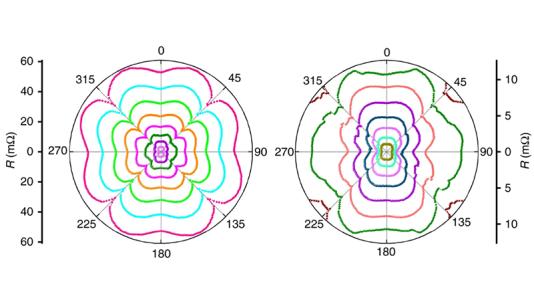
Scientific Achievement
Discovery of a new electron orbital contribution to the emergence of intriguing magneto-transport phenomena.
Significance and Impact
This work provides direct evidence of a new type of orbital-induced property in CeSb and its contributions to the phenomenon of extremely large magnetoresistance. It further demonstrates the potential of utilizing orbital-flop transitions in electronic applications via spin-valve-like structures.
Research Details
- Grew ultra-high quality CeSb single crystals.
- Measured magnetoresistances in a rotating magnetic field perpendicular to the current.
- Developed a phenomenological model to account for the anisotropic magnetoresistance.
- Constructed a spin-valve-like structure to demonstrate the utilization of orbital-flops.
Argonne National Laboratory seeks solutions to pressing national problems in science and technology. The nation’s first national laboratory, Argonne conducts leading-edge basic and applied scientific research in virtually every scientific discipline. Argonne researchers work closely with researchers from hundreds of companies, universities, and federal, state and municipal agencies to help them solve their specific problems, advance America’s scientific leadership and prepare the nation for a better future. With employees from more than 60 nations, Argonne is managed by UChicago Argonne, LLC for the U.S. Department of Energy’s Office of Science.
The U.S. Department of Energy’s Office of Science is the single largest supporter of basic research in the physical sciences in the United States and is working to address some of the most pressing challenges of our time. For more information, visit https://energy.gov/science.